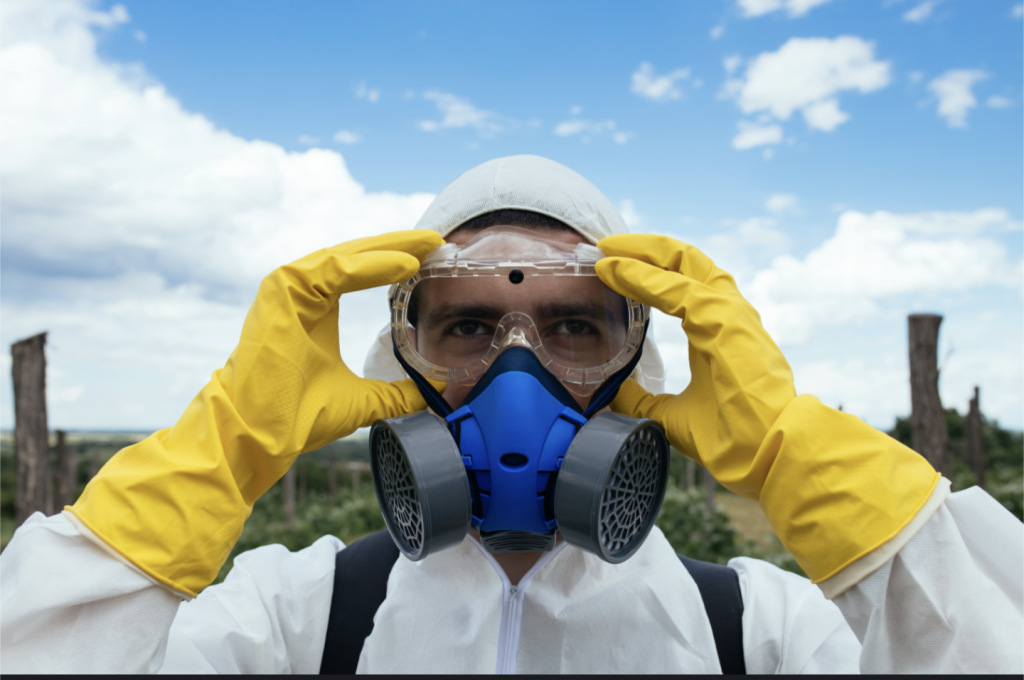The use of respiratory protective equipment (RPE) protects workers in industries where there’s a high risk of exposure to hazardous material in the atmosphere. It prevents them from breathing in these harmful substances while supplying them with clean, healthy air.

For this reason, there are multiple types of RPE designed to safeguard against airborne particles according to the threat level. Each respirator build needs to be test fitted and regularly checked to ensure worker safety while they undergo training on how to use their equipment correctly. While many RPE are sub-grouped together for their similarities, they mainly fall under a few main categories.
Here are the four types of respiratory protective equipment:
- Powered Air Purifying Respirator
The powered air purifying respirator (PAPR) protects workers against contaminated air, such as toxic gases, particles, chemicals, pollutants, and vapors. They consist of a full-face shielding mask and a hood or helmet worn over the head for added eye coverage. It’s attached to a breathing tube or hose and a battery-powered motor blower that can be mounted on the worker’s lower back.
The blower is also connected to filters or cartridges that purify the air when dangerous aerosols are sucked into it. The PAPR is used when other half-mask respirators don’t provide enough protection and for a more comfortable breathing and wearing experience since they can be operated for up to eight hours at a time.
- Supplied Air Respirator
The supplied air respirator (SAR) is used by workers going into environments where the air is harmful or contaminated or where conditions make it difficult to breathe. In this case, compressed air is delivered to the worker from a pressurized oxygen cylinder into the breathing hose.
Furthermore, it contains a full facepiece to cover the whole head and the entire equipment can be strapped around the torso and waist. Some respirators have a long breathing hose of a few meters connected to a stationary cylinder located away from the contaminated site, such as outside a facility.
While this may provide a high level of respiratory protection and a constant stream of clean air, it does have limitations. For instance, the workers can only move up to the length allowed by the breathing tube.
- Self-Contained Breathing Apparatus
Considered the most effective respiratory protection, the self-contained breathing apparatus (SCBA) is used in environments where the air is immediately dangerous to life or health. They can also be used to supply immediate oxygen to people during oxygen-deficient situations.
This is why they’re mostly associated with firefighters and workers in chemical plants and tunnels. The main components of an SCBA include a full facepiece with a shield and a breathing tube connected to a high-pressure oxygen tank mounted on the back. A carrying pack strapped over the torso makes it easier to carry, so it doesn’t limit mobility and duration of use.
Furthermore, most SCBAs contain open-circuit equipment where oxygen and pressure from the tank can be released with a regulator valve for up to 90 minutes. The closed-circuit equipment has filters where air can be recirculated to provide longer usage time, such as when workers conduct underground mining operations.
- Elastomeric Respirators
Elastomeric respirators have a filter efficiency of not lower than 95%, thus they’re considered safer. They provide protection against pathogens and other airborne hazards. They’re also utilized when there’s a need for greater protection from stronger air contaminants such as toxic fumes and gases.
There are generally two types of elastomeric respirators.
- Elastomeric Full Facepiece Respirators: This type provides a face shield and covers the whole face, including the eyes. The cartridges or filters attached to the facepiece are replaceable.
- Elastomeric Half Facepiece Respirators: The half-mask respirator only covers the nose and mouth and is strapped to the head. Its cartridges or filters are also replaceable.
It’s important to note that since they’re reusable, they present a more sustainable option than the disposable filtering facepiece respirator (FFR) typically used by healthcare providers. However, facepiece components, like valves, valve covers, and straps, need to be thoroughly cleaned and disinfected. On the other hand, the filter material should be discarded once it becomes soiled, clogged, or contaminated.
Conclusion
There are several types of respiratory protective equipment that are structurally designed to reduce the risk of workers inhaling toxic substances in the air at different threat levels. Most are made out of apparatus that covers the mouth, nose, and, in some cases, the whole face for complete coverage.
What’s more, some equipment filters out contaminated air particles, while others resupply clean air using breathing hoses. Respiratory protective equipment is necessary for industries where workers can be exposed to environmental hazards, making it an indispensable part of ensuring worker safety.
